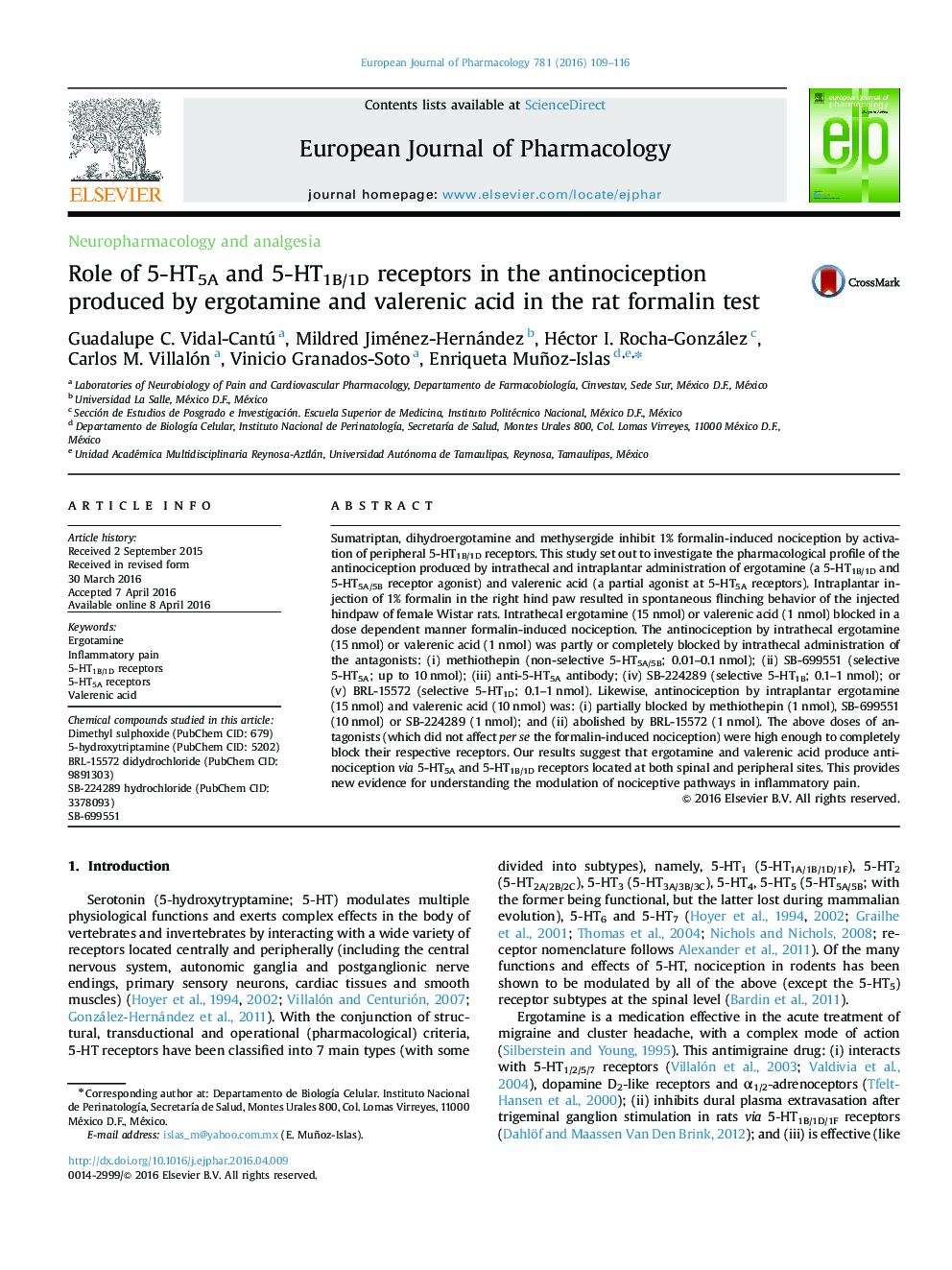| کد مقاله | کد نشریه | سال انتشار | مقاله انگلیسی | نسخه تمام متن |
|---|---|---|---|---|
| 2530961 | 1558899 | 2016 | 8 صفحه PDF | دانلود رایگان |

Sumatriptan, dihydroergotamine and methysergide inhibit 1% formalin-induced nociception by activation of peripheral 5-HT1B/1D receptors. This study set out to investigate the pharmacological profile of the antinociception produced by intrathecal and intraplantar administration of ergotamine (a 5-HT1B/1D and 5-HT5A/5B receptor agonist) and valerenic acid (a partial agonist at 5-HT5A receptors). Intraplantar injection of 1% formalin in the right hind paw resulted in spontaneous flinching behavior of the injected hindpaw of female Wistar rats. Intrathecal ergotamine (15 nmol) or valerenic acid (1 nmol) blocked in a dose dependent manner formalin-induced nociception. The antinociception by intrathecal ergotamine (15 nmol) or valerenic acid (1 nmol) was partly or completely blocked by intrathecal administration of the antagonists: (i) methiothepin (non-selective 5-HT5A/5B; 0.01–0.1 nmol); (ii) SB-699551 (selective 5-HT5A; up to 10 nmol); (iii) anti-5-HT5A antibody; (iv) SB-224289 (selective 5-HT1B; 0.1–1 nmol); or (v) BRL-15572 (selective 5-HT1D; 0.1–1 nmol). Likewise, antinociception by intraplantar ergotamine (15 nmol) and valerenic acid (10 nmol) was: (i) partially blocked by methiothepin (1 nmol), SB-699551 (10 nmol) or SB-224289 (1 nmol); and (ii) abolished by BRL-15572 (1 nmol). The above doses of antagonists (which did not affect per se the formalin-induced nociception) were high enough to completely block their respective receptors. Our results suggest that ergotamine and valerenic acid produce antinociception via 5-HT5A and 5-HT1B/1D receptors located at both spinal and peripheral sites. This provides new evidence for understanding the modulation of nociceptive pathways in inflammatory pain.
Journal: European Journal of Pharmacology - Volume 781, 15 June 2016, Pages 109–116